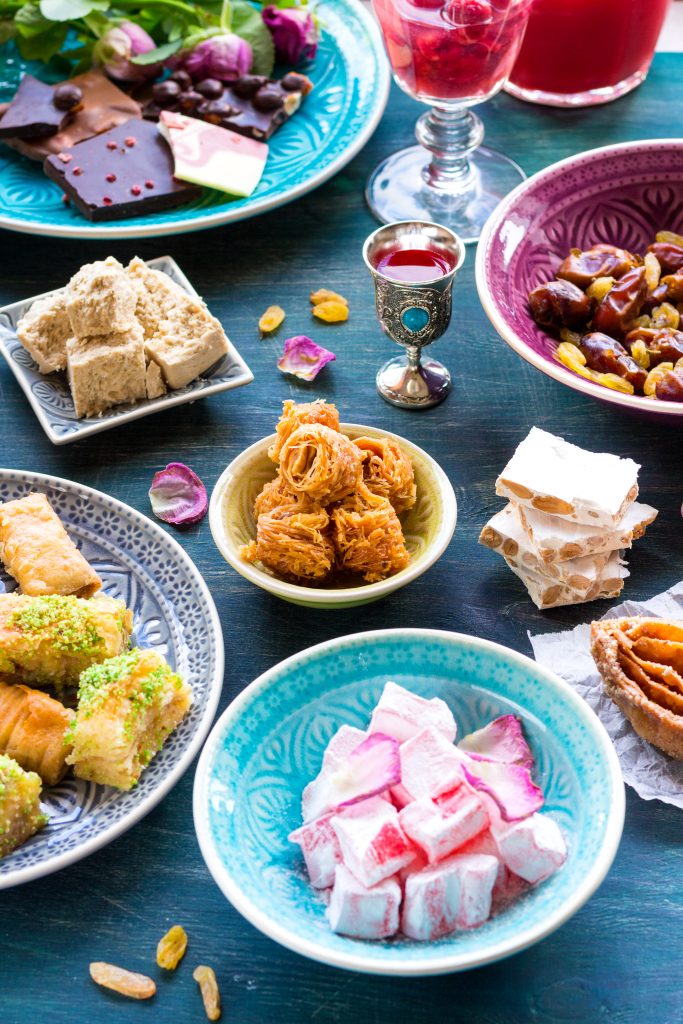
The Middle East is known for its rich culinary traditions, and desserts play a particularly important role in this vibrant food culture.
From buttery, nut-filled pastries to creamy, sweet confections, Middle Eastern desserts are beloved for their intricate flavors and indulgent textures. These treats are commonly made using a combination of ingredients like semolina, phyllo dough, honey, and a variety of nuts—most notably pistachios and walnuts. Additionally, Ashta, a thick cream, and syrup are widely used to add richness and sweetness.
Many of these desserts are traditionally enjoyed during special occasions like Ramadan and Eid. During Eid, it’s common to serve guests Ma’amoul, delicate semolina cookies filled with dates or nuts, and Baklava, the famed layered pastry soaked in syrup and stuffed with pistachios. But these are just a glimpse of the vast dessert offerings found throughout the region.
Here, we explore some of the most iconic Middle Eastern desserts that are guaranteed to satisfy your sweet tooth.
Kunafe
Perhaps the most famous Middle Eastern and Turkish dessert, Kunafe (also spelled as Knafeh), is a must-try for anyone exploring this cuisine. Originating from Palestine and Lebanon, it has since become a beloved dish across the entire Middle East. Traditional Kunafe is made from fine, noodle-like pastry threads called kataifi, which are soaked in sweet syrup and layered with soft, melted cheese in the center. The contrasting textures of the crispy pastry and gooey cheese create a sensational experience for the palate.
Kunafe is typically garnished with ground pistachios, adding a slightly crunchy texture and nutty flavor to complement the cheesy goodness.

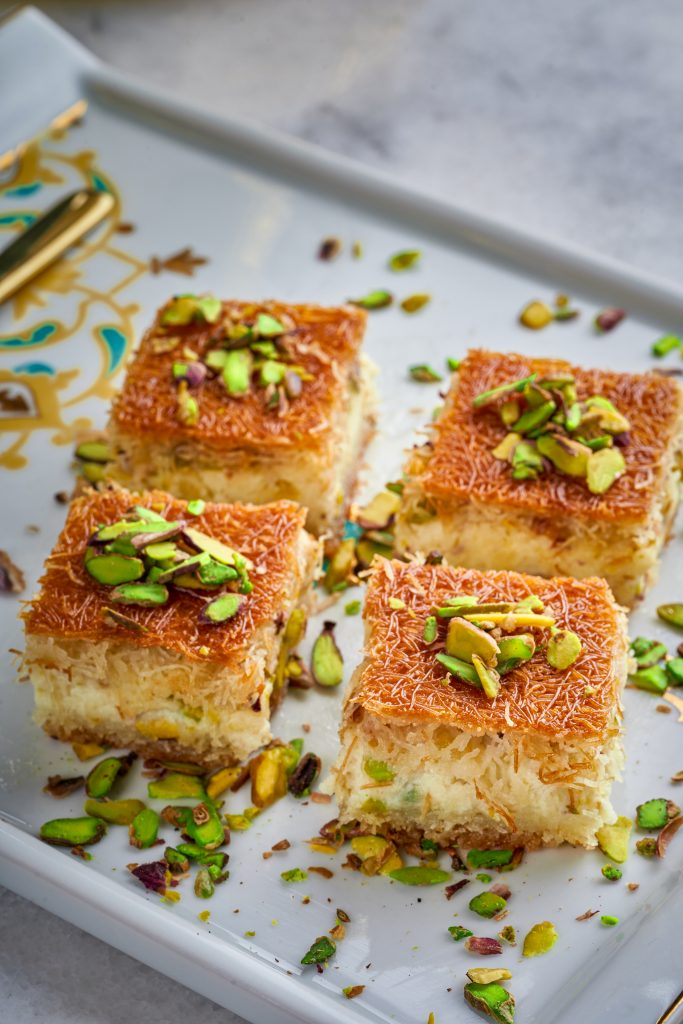
Kunafe With Ashta
A delicious variation of the traditional cheese-filled Kunafe is Kunafe with Ashta. Ashta is a type of clotted cream that has a thick, velvety texture, giving the dessert a rich, luxurious twist. Instead of cheese, this version is stuffed with Ashta, making it creamier and lighter while still delivering the signature crispiness of the pastry layers. It’s a popular choice for those who prefer a softer and sweeter filling without the saltiness of cheese.
Harissa
Harissa is another classic Middle Eastern dessert, not to be confused with the spicy condiment of the same name. This dessert is a type of semolina cake, dense and sweet, often made with yogurt and soaked in fragrant sugar syrup. A key characteristic of Harissa is its topping—typically garnished with crunchy pistachios or almonds, which provide both flavor and texture.
Harissa is an ideal choice for those who enjoy something rich but not overwhelmingly sweet. It’s commonly served in bite-sized portions, perfect for sharing with guests or enjoying after a meal.

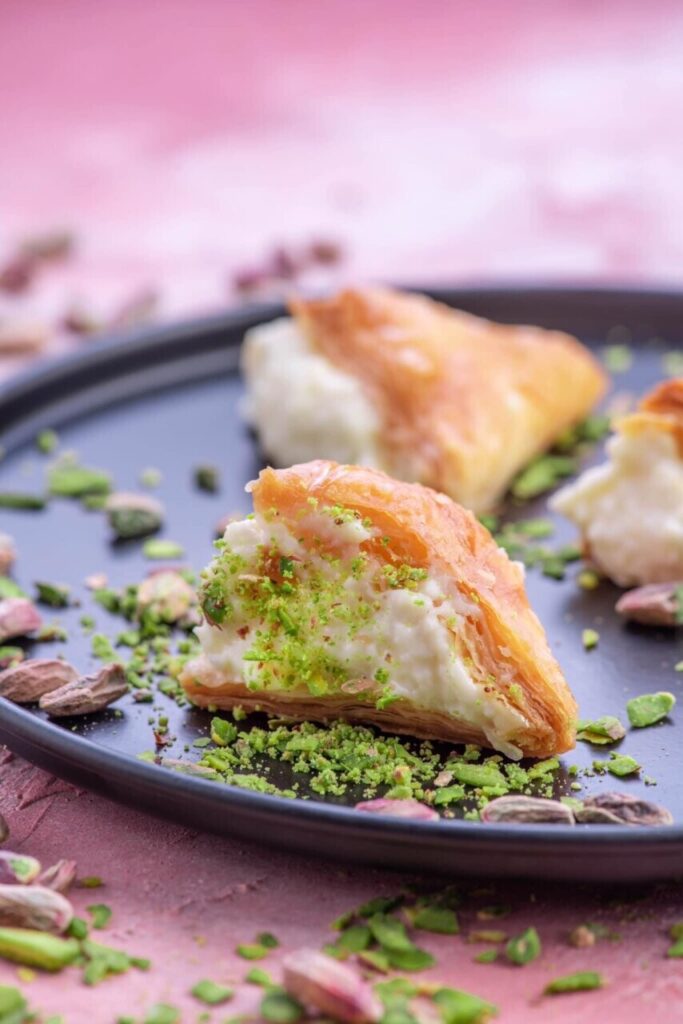
Warbat With Ashta
Warbat Bil Ashta is another beloved Middle Eastern dessert that showcases the versatility of Ashta. Warbat is made by layering thin sheets of phyllo dough, which are baked until crispy and golden, and then filled with luscious Ashta cream. The entire pastry is drenched in a light syrup, giving it a perfect balance of sweetness and crunch.
Warbat Bil Ashta is often served during celebrations and gatherings, making it a festive treat that pleases both young and old alike. Its flaky layers combined with the creamy filling create a delicious contrast that makes this dessert irresistible.
Halawet El Jibn
Halawet Al-Jibn (literally “sweetness of cheese”) is a delicacy popular in Syria and Lebanon, featuring a dough made from sweetened cheese mixed with semolina. This dough is then rolled and filled with Ashta, creating a light, chewy dessert with a creamy center. It is often topped with crushed pistachios and drizzled with a sugar syrup scented with rose water or orange blossom water.
Halawet Al-Jibn is the perfect balance between sweet and savory, making it a favorite choice for those looking for something unique and indulgent.
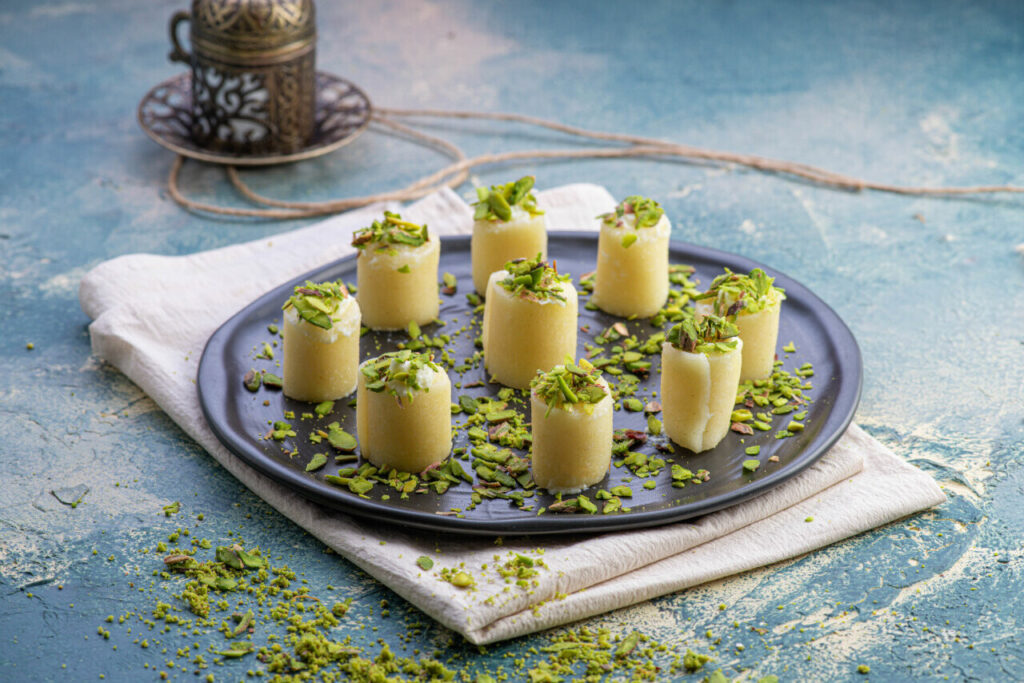
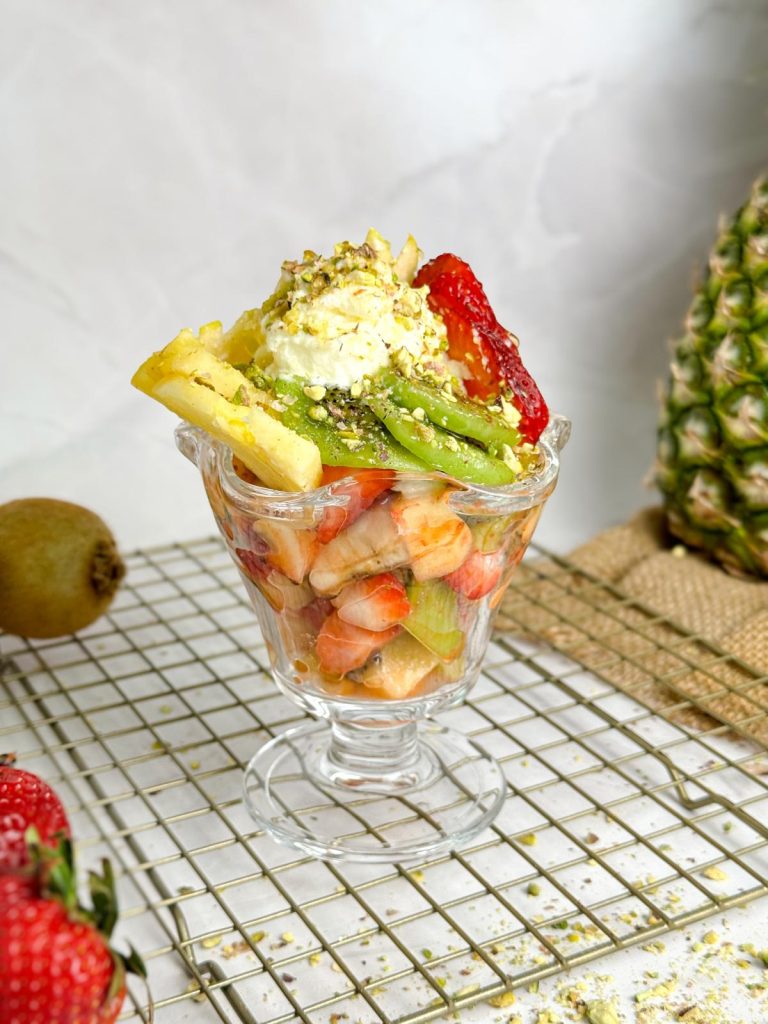
Fruit Salad with Ashta
While fruit salad might sound like a simple dessert, the Middle Eastern version takes it to a whole new level by adding Ashta. This creamy element elevates the fresh fruit, making the dish richer and more satisfying. Fresh seasonal fruits like bananas, strawberries, and pomegranate seeds are commonly used, and when paired with the thick creaminess of Ashta, they transform into an elegant and indulgent dessert.
Fruit salad with Ashta is often enjoyed as a lighter alternative to some of the heavier desserts like Kunafe, but it’s no less satisfying.
Other Middle Eastern Desserts
Though the desserts mentioned above are some of the most iconic, the Middle East offers a wide variety of other sweets. Desserts like Basbousa (a semolina cake soaked in syrup), Atayef (stuffed pancakes served during Ramadan), and Qatayef Asafiri (mini pancakes filled with cream or nuts) are all popular choices during festive occasions.
Middle Eastern desserts offer a wealth of flavor, texture, and sweetness, often reflecting the rich culinary traditions of the region. Whether you’re celebrating Eid or simply indulging in a post-meal treat, these desserts capture the essence of Middle Eastern hospitality and the love for sharing food.

So, next time you’re looking to try something new, why not explore the world of Middle Eastern desserts? From the cheesy delight of Kunafe to the creamy decadence of Halawet Al-Jibn, there’s something for everyone to enjoy!
